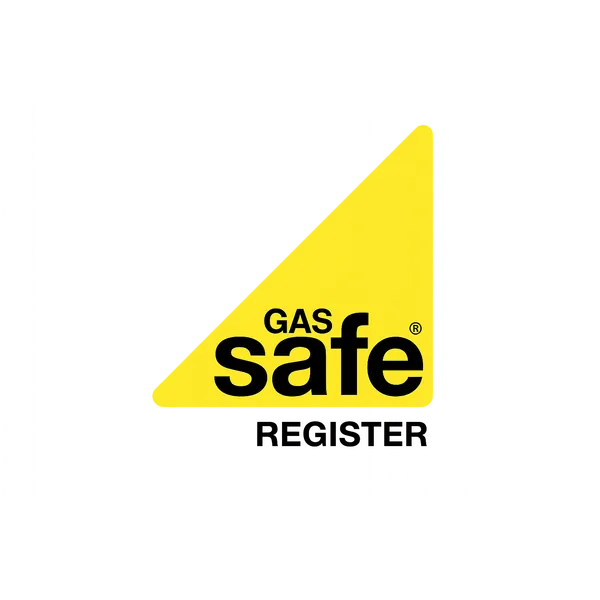Monobloc vs. Split System: Which Air Source Heat Pump is for You?
As the UK continues its transition towards net zero carbon emissions, air source heat pumps (ASHPs) have emerged as a leading solution for sustainable home heating. However, choosing between the two main configurations—monobloc and split systems—can be challenging for homeowners. At CRG Direct, we've installed hundreds of both systems across the UK, and we're here to guide you through this crucial decision.
Understanding the Core Differences
What is a Monobloc System?
A monobloc air source heat pump is a self-contained unit where all the major components—compressor, heat exchanger, and expansion valve—are housed in a single outdoor unit. The system is factory-sealed and pre-charged with refrigerant, making it a complete package ready for installation.
What is a Split System?
Split system heat pumps consist of two separate units: an outdoor unit containing the compressor and heat exchanger, and an indoor unit housing additional components. These systems require on-site refrigerant charging and connection between the indoor and outdoor units.
Installation Complexity and F-Gas Regulations
Monobloc Installation Process
Monobloc systems offer significant advantages in installation simplicity:
- Factory-sealed: No on-site refrigerant handling required
- F-Gas certified technicians not mandatory: Since the system arrives pre-charged, installers don't need F-Gas certification for the initial installation
- Simpler plumbing: Only water connections between the outdoor unit and your heating system
- Faster installation: Typically 1-2 days for most residential properties
Split System Installation Requirements
Split systems present more complex installation challenges:
- On-site refrigerant charging: Requires F-Gas certified technicians
- Refrigerant pipework: Copper pipes must be run between indoor and outdoor units
- Vacuum testing: Essential to ensure no moisture or contaminants enter the system
- Longer installation time: Typically 2-3 days due to additional complexity
- Higher skill requirement: Installers must be qualified for refrigerant handling
F-Gas Regulation Implications
The EU F-Gas Regulation (retained in UK law) significantly impacts split system installations:
- Mandatory certification: Anyone handling refrigerants must hold appropriate F-Gas certification
- Leak checking requirements: Regular mandatory inspections based on refrigerant charge
- Record keeping: Detailed logs of refrigerant usage and leaks must be maintained
- Recovery obligations: Refrigerant must be properly recovered during maintenance or decommissioning
Performance and Efficiency Comparison
Heating Performance
Both systems can achieve similar Coefficient of Performance (COP) ratings when properly installed:
- Typical COP range: 3.0-4.5 for both configurations
- Low-temperature performance: Modern systems maintain efficiency down to -15°C
- Defrost cycles: Both systems include automatic defrost functionality
Noise Considerations
- Monobloc: All noise-generating components are outdoors
- Split systems: Quieter outdoor units, but indoor units may produce some noise
- Location planning: Both require careful placement to minimise noise disturbance
Space Requirements and Property Suitability
Monobloc Space Considerations
- Outdoor space: Requires adequate space for the complete unit (typically 1m²)
- Proximity to property: Must be located close to heating system connections
- Garden/yard placement: Ideal for properties with accessible outdoor space
- No indoor space requirement: All components are contained outdoors
Split System Space Requirements
- Outdoor unit: Smaller footprint than monobloc units
- Indoor unit space: Requires approximately 0.5-1m² of indoor space
- Flexible placement: Outdoor unit can be further from the property
- Ideal for: Properties with limited outdoor space but available indoor utility areas
Cost Analysis: Initial Investment and Lifetime Costs
Installation Costs
Monobloc Systems:
- Lower installation labour costs
- No refrigerant handling costs
- Typical installation: £8,000-£12,000
Split Systems:
- Higher installation labour costs
- F-Gas certification adds to costs
- Typical installation: £9,000-£14,000
Maintenance and Running Costs
- Monobloc: Lower maintenance costs, no refrigerant-related servicing
- Split systems: Higher maintenance costs due to refrigerant monitoring
- Energy efficiency: Comparable running costs when properly installed
- Long-term reliability: Both systems offer 15-20 year lifespans with proper maintenance
CRG Direct's Property-Specific Recommendations
Victorian and Edwardian Properties
Recommended: Monobloc systems Reasoning: These properties often have limited indoor space but adequate garden areas. The simpler installation minimises disruption to period features.
Modern Apartments and Flats
Recommended: Split systems Reasoning: Limited outdoor space makes compact outdoor units essential. Indoor units can be discreetly installed in utility cupboards.
New Build Properties
Recommended: Either system, depending on design Reasoning: Both can be integrated during construction. Monobloc offers cost savings, while split systems provide design flexibility.
Rural Properties with Large Gardens
Recommended: Monobloc systems Reasoning: Ample outdoor space and typically longer pipe runs favour the all-outdoor configuration.
Urban Terrace Houses
Recommended: Split systems Reasoning: Limited outdoor space and noise considerations make smaller outdoor units preferable.
Maintenance Implications and Long-term Considerations
Monobloc Maintenance
- Annual servicing: Basic checks and cleaning
- No refrigerant monitoring: Factory-sealed system reduces maintenance complexity
- Component accessibility: All components easily accessible in one location
- Warranty considerations: Single manufacturer responsibility
Split System Maintenance
- Regular F-Gas checks: Mandatory leak inspections
- Refrigerant top-ups: Potential need for refrigerant replenishment
- Multiple component locations: Maintenance required at both indoor and outdoor units
- Warranty coordination: Potential complexity with multiple manufacturers
Making Your Decision: Key Questions to Consider
Before choosing between monobloc and split systems, ask yourself:
- Space availability: Do you have adequate outdoor space for a monobloc unit?
- Installation access: Is your property easily accessible for refrigerant pipework?
- Budget constraints: Are you prioritising lower installation costs or long-term flexibility?
- Future maintenance: Do you prefer simpler maintenance or are you comfortable with F-Gas requirements?
- Property type: Does your property layout favour one configuration over the other?
The Future of Heat Pump Technology
Both monobloc and split systems continue to evolve with technological advancements:
- Improved refrigerants: Lower Global Warming Potential (GWP) refrigerants becoming standard
- Smart controls: Integration with home automation systems
- Hybrid systems: Combination with existing heating systems for optimal efficiency
- Noise reduction: Ongoing improvements in acoustic performance
Conclusion: Finding Your Perfect Match
Choosing between monobloc and split system air source heat pumps isn't about finding a universally superior option—it's about matching the right technology to your specific property, budget, and requirements.
At CRG Direct, we believe in providing honest, property-specific advice rather than pushing one system over another. Our experience across hundreds of installations has taught us that the best system is the one that fits your unique circumstances perfectly.
Monobloc systems excel in properties with good outdoor access and where installation simplicity is a priority. Their factory-sealed nature and reduced regulatory requirements make them an excellent choice for many UK homes.
Split systems offer superior flexibility for properties with space constraints or specific design requirements. While requiring more specialised installation, they can be ideal solutions where monobloc units aren't practical.
Ready to discover which air source heat pump configuration is right for your property? Contact our expert team today for a personalised assessment and quotation. We'll help you navigate the complexities of F-Gas regulations, installation requirements, and system performance to ensure you make the best investment in sustainable home heating.















